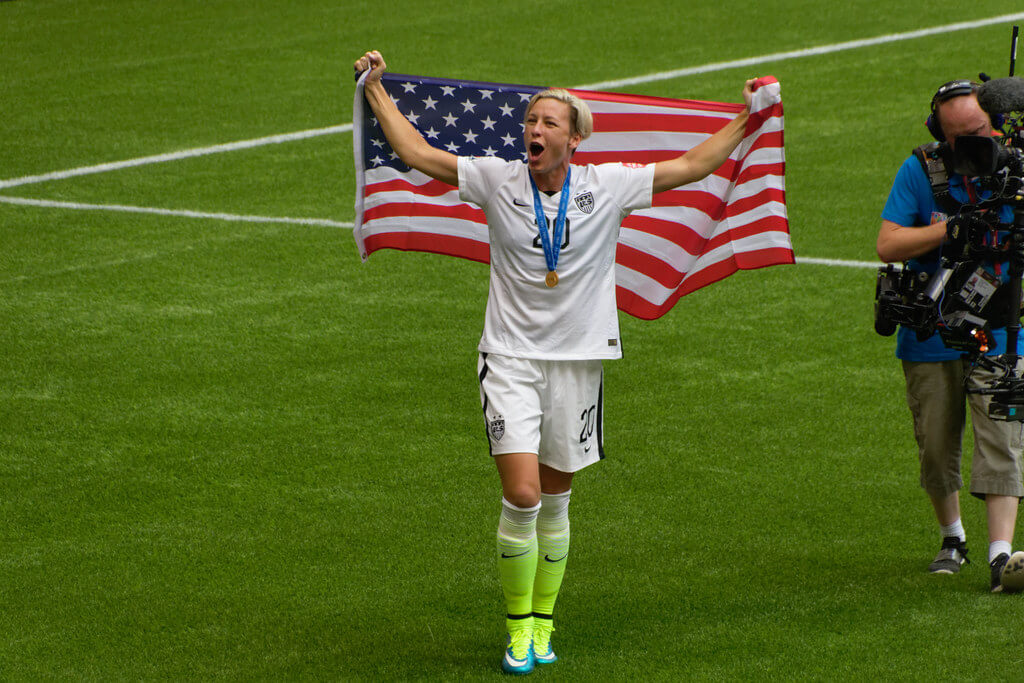Caitlin Clark is currently at the center of the sports world. The former Iowa Hawkeyes superstar was the No. 1 overall pick by the Indiana Fever in the WNBA Draft on April 15, 2024. She’s a generational talent who set numerous scoring records during her time in college. Clark is one of the most recognizable and popular people in the world today — and even helped the Women’s NCAA Tournament score higher TV ratings than the men’s tournament for the first time ever.
She is literally and figuratively changing the game. Hopefully, those changes will extend to WNBA salaries one day because there are NBA mascots who make more in annual salary than Clark will make in her first four years combined in the WNBA!
Caitlin Clark’s contract
(Via @spotrac ) pic.twitter.com/d0YQtVGriR
— NBACentral (@TheDunkCentral) April 16, 2024
According to spotrac.com, Clark’s four-year rookie deal with the Indiana Fever can be worth up to $338,056 in total. Her contract, broken down yearly, looks like this:
- $76,535 in 2024
- $78,066 in 2025
- $85,873 in 2026
- $97,582 in 2027 (as an optional year that is not guaranteed)
That’s a far cry from what Victor Wembanyama, the No. 1 overall pick by the San Antonio Spurs in the 2023 NBA Draft, is making in his four-year rookie deal — $55.1 million. It’s not even in the same stratosphere.
Making the gender pay gap even more glaring, Clark won’t even be making as much as some NBA mascots do in a single year. In fact, three mascots make more annually than she will pocket during her rookie deal, which seems patently absurd given her status in the sport.
Rocky the Mountain Lion earns more than 10 times the average pay for professional NBA mascots (around $60k).
(h/t @SBJ) pic.twitter.com/IUodSByGgg
— Boardroom (@boardroom) October 2, 2022
The top five highest-paid mascots, according to Sports Business Journal, include:
- Denver Nuggets’ Rocky the Mountain Lion ($625,000)
- Atlanta Hawks’ Harry the Hawk ($600,000)
- Chicago Bulls’ Benny the Bull ($400,000)
- Phoenix Suns’ Go the Gorilla ($200,000)
- Charlotte Hornets’ Hugo the Hornet ($100,000)
No offense to mascots, but Clark and other WNBA rookies like Angel Reese, Kamilla Cardoso, Cameron Brink, and Rickea Jackson should not be making drastically less than them.
Some might point to the fact that Clark is making around $3.4 million in endorsements, according to on3.com, which helps to make up for the lack of salary in the WNBA. However, that’s not the issue. It’s about equal pay. Women make 82 cents for every dollar men do, according to the Pew Research Center. In the WNBA, it’s significantly less compared to their NBA peers.
Boston Celtics’ Jaylen Brown currently holds the most expensive NBA contract of all time — five years, $304 million. That’s an average annual value of $60.8 million. Sports fans could also argue that Brown isn’t even the best player on the Celtics!
The wealthiest WNBA contracts belong to three players: Connecticut Sun’s DeWanna Bonner, Washington Mystics’ Elena Delle Donne, and Seattle Storm’s Skylar Diggins-Smith. All three inked four-year, $899,480 deals — an average annual value of $224,870. That doesn’t even qualify for the highest tax bracket in the United States in 2024!
On average, NBA players are making $9.7 million for the 2023-24 season, FanSided reports. Meanwhile, WNBA players made an average of $147,745 for the 2023 season, according to The Sporting News. Due to their lower-end pay compared to other professional sports leagues, many WNBA stars travel overseas to play in Europe during the offseason.
Rakesh Kochhar, a senior researcher for Pew Research Center, writes that the gender pay gap “has barely closed in the United States in the past two decades.”
“There is no single explanation for why progress toward narrowing the pay gap has all but stalled in the 21st century. Women generally begin their careers closer to wage parity with men, but they lose ground as they age and progress through their work lives, a pattern that has remained consistent over time,” explains Kochhar. “The pay gap persists even though women today are more likely than men to have graduated from college. In fact, the pay gap between college-educated women and men is not any narrower than the one between women and men who do not have a college degree.”

In 2019, the United States Women’s National Team helped bring the gender pay gap to the forefront when they filed a lawsuit against the U.S. Soccer Federation over unequal pay. Despite conquering women’s soccer globally and winning multiple World Cups, they were still making less than their American male counterparts — who have yet to accomplish what the U.S. women’s team has. The lawsuit ended up being settled in 2022 as USWNT players received a total of $24 million from U.S. Soccer.
“In the last World Cup cycle, FIFA offered $38 million to the winners of the men’s World Cup, but just $4 million to the team that won the women’s edition, which happened to be the USWNT. U.S. Soccer clearly based its own bonuses in its contracts with the teams in part on FIFA’s prize money — but sometimes the federation differed significantly in how it chose to award wins for the men and women at the World Cup,” ESPN reported at the time. “In all, U.S. Soccer was willing to give the men as much as $36 million for success at the World Cup, while the women could only earn about $5 million. As part of this settlement, that will change, regardless of how much money FIFA awards.”
As Clark enters the league, the calls will likely grow louder that it’s time for WNBA players to be making what they’re worth. They should not be making 98 percent less on average than what NBA players receive. Time will tell if the WNBA drastically changes its salary structure by the time the next wave of superstars like JuJu Watkins, Paige Bueckers, and Flau’jae Johnson enter women’s professional basketball.

